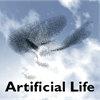朱利安·弗朗西斯·米勒,1955–2022
IF 1.5
4区 计算机科学
Q4 COMPUTER SCIENCE, ARTIFICIAL INTELLIGENCE
引用次数: 0
摘要
朱利安的工作在整个人工生命界都很有名:他的笛卡尔遗传规划(CGP)和材料计算是基础概念。他还在形态计算和神经计算方面做出了贡献,这一切都是基于他对进化作为攻击和解决问题的手段的着迷。和ALife社区的许多人一样,他有着跨学科的职业生涯,从物理学第一学位和数学博士学位开始,然后在英国纳皮尔大学、伯明翰大学和约克大学进行自然计算和材料计算研究。Julian发明了CGP(Miller,1999),这是一种将图形程序(通过边连接的功能节点)编码为一串整数的方法,允许字符串以标准方式进化,图形(位于笛卡尔网格上,因此得名)是基因型到表型映射的结果。从这个简单的开始,朱利安和他的学生们就继续开发这种方法,其他研究人员也加入了进来。十年后,该领域显著发展,许多研究人员在自己的工作中使用了CGP,并扩展了最初的概念。事实上,这个领域已经发展到朱利安可以编辑一整本关于这个主题的书的程度(Miller,2011)。本文章由计算机程序翻译,如有差异,请以英文原文为准。
Julian Francis Miller, 1955–2022
Julian’s work is well known throughout the Artificial Life community: His Cartesian genetic programming (CGP) and in materio computing are foundational concepts. He also made contributions in morphological computing and neurocomputing, all based on his fascination with evolution as a means of attacking and solving problems. Like many in the ALife community, he had an interdisciplinary career, commencing with a first degree in Physics and a PhD in Mathematics, followed by research in Natural Computing and material computing at the universities of Napier, Birmingham, and York in the UK. Julian invented CGP (Miller, 1999), a way of encoding graph programs (functional nodes connected by edges) in a string of integers, allowing the string to be evolved in the standard way, with the graph (located on a Cartesian grid, hence its name) produced as the result of a genotype to phenotype mapping. From this simple beginning, Julian and his students continued to develop the approach, and other researchers joined in. Ten years later, the field had grown significantly, with many researchers both using CGP in their own work and extending the original concept. Indeed, the field had grown enough that Julian could edit an entire book on the topic (Miller, 2011).
求助全文
通过发布文献求助,成功后即可免费获取论文全文。
去求助
来源期刊

Artificial Life
工程技术-计算机:理论方法
CiteScore
4.70
自引率
7.70%
发文量
38
审稿时长
>12 weeks
期刊介绍:
Artificial Life, launched in the fall of 1993, has become the unifying forum for the exchange of scientific information on the study of artificial systems that exhibit the behavioral characteristics of natural living systems, through the synthesis or simulation using computational (software), robotic (hardware), and/or physicochemical (wetware) means. Each issue features cutting-edge research on artificial life that advances the state-of-the-art of our knowledge about various aspects of living systems such as:
Artificial chemistry and the origins of life
Self-assembly, growth, and development
Self-replication and self-repair
Systems and synthetic biology
Perception, cognition, and behavior
Embodiment and enactivism
Collective behaviors of swarms
Evolutionary and ecological dynamics
Open-endedness and creativity
Social organization and cultural evolution
Societal and technological implications
Philosophy and aesthetics
Applications to biology, medicine, business, education, or entertainment.
 求助内容:
求助内容: 应助结果提醒方式:
应助结果提醒方式:


